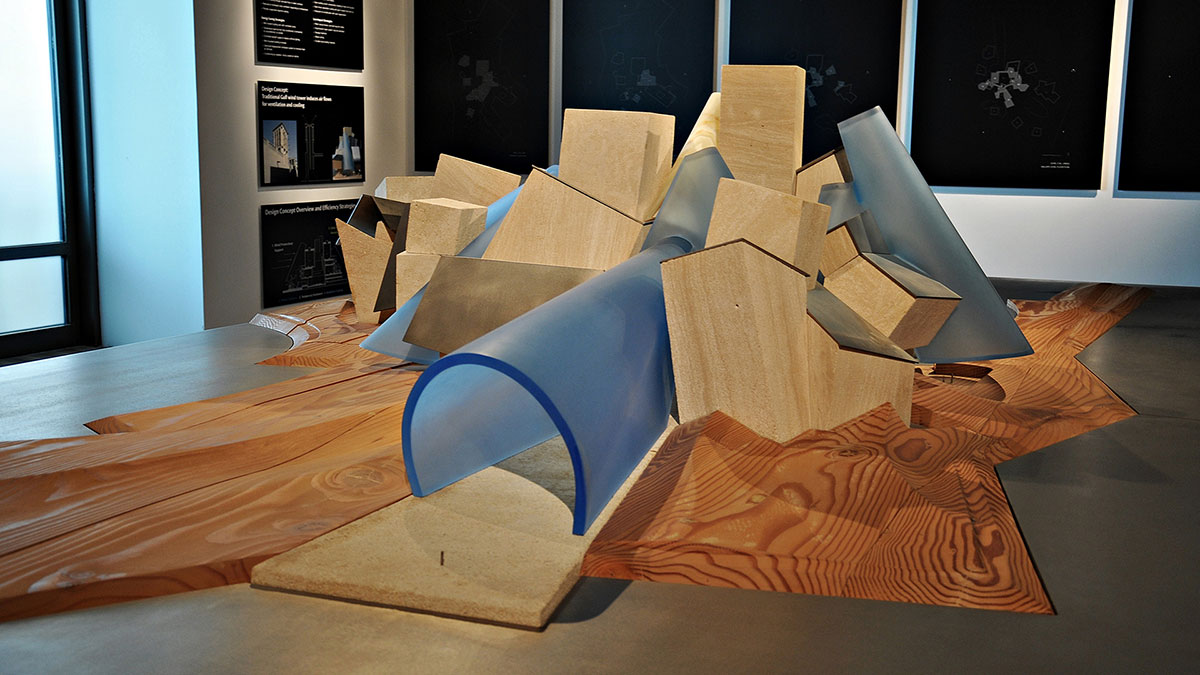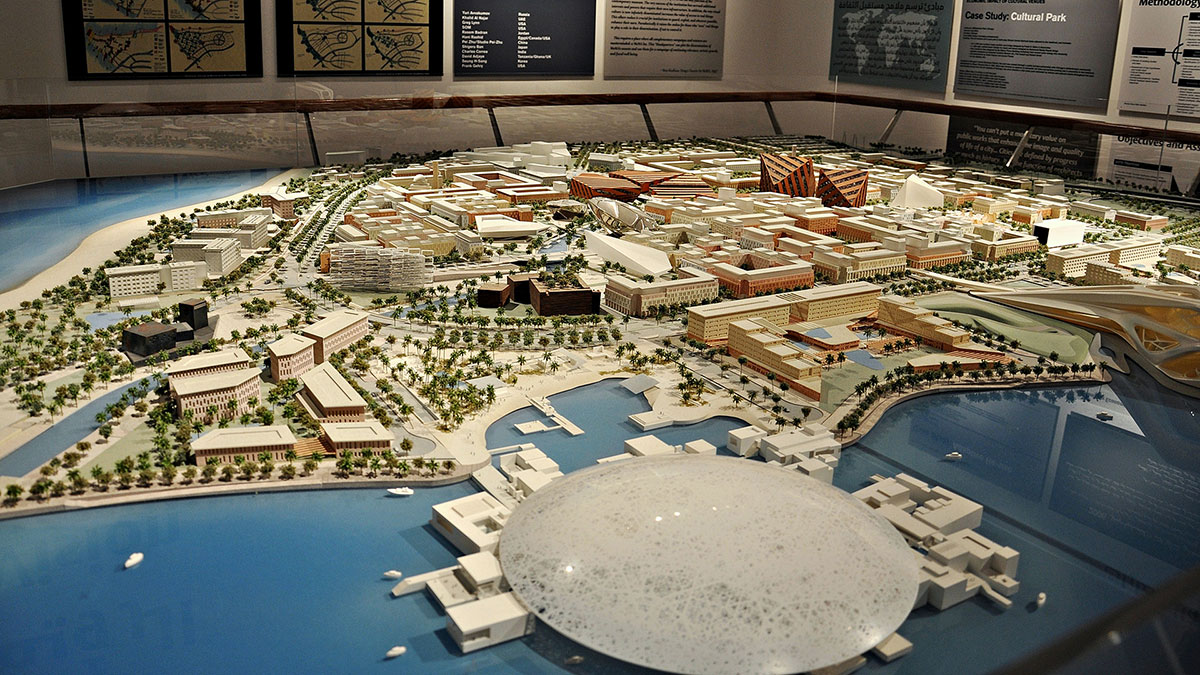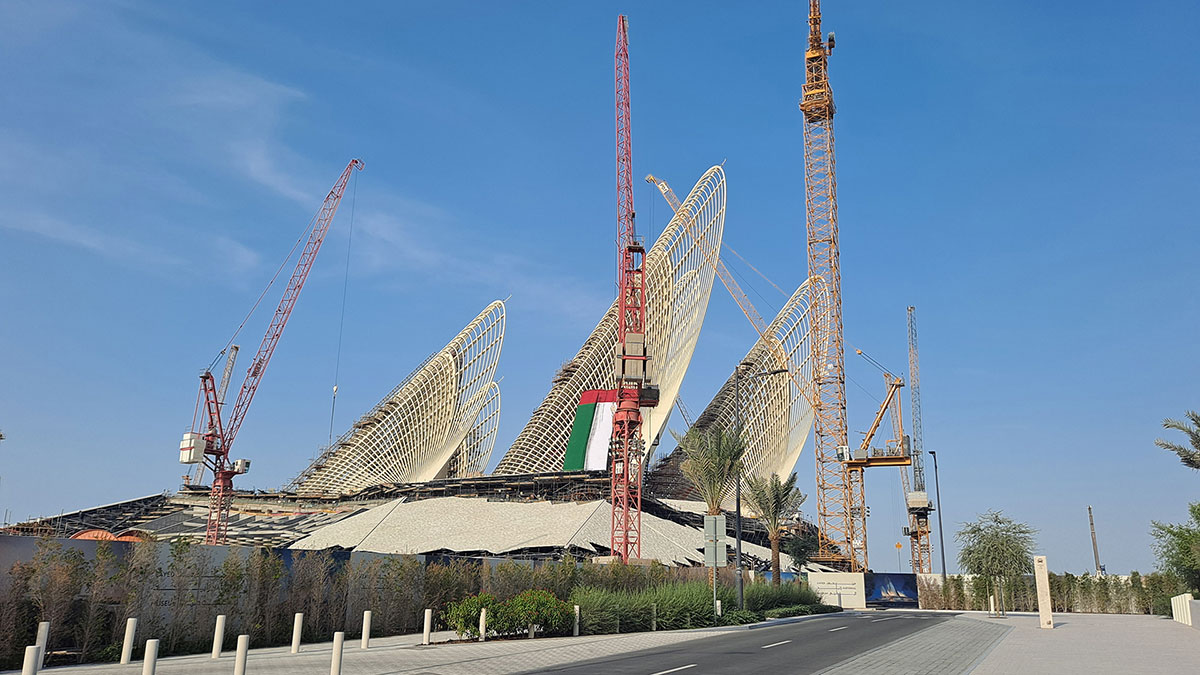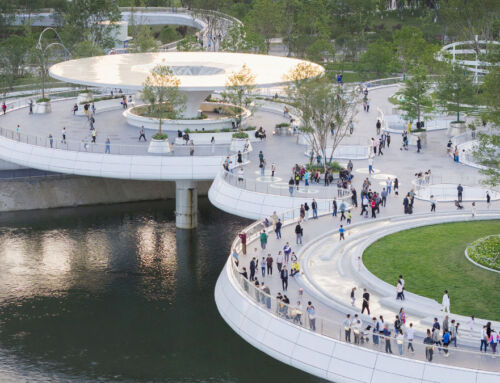In the north of the city of Abu Dhabi, capital of the United Arab Emirates, Saadiyat Island has adopted a new identity as an international cultural centre. It is an ambitious project, a strategic vision that aims to position the country as a bridge between cultures, a link through art and knowledge between East and West.
Inaugurated in 2017, the Louvre Abu Dhabi, Jean Nouvel’s architectural masterpiece, marks the starting point of this transformation. Its iconic dome of fractal geometry houses a historical collection in dialogue with loans from Parisian institutions, in what is a model of cultural diplomacy. The Guggenheim Abu Dhabi will soon join the museum’s offerings, in this case by architect Frank Gehry.

Alberto-g-rovi | wikipedia.org | CC BY-SA 3.0
Elsewhere, the Zayed National Museum stands as the custodian of Emirati historical memory. The Natural History Museum, which is scheduled to open its doors to the public this year (2025), will focus on universal narratives about the evolution of life. Berklee Abu Dhabi provides the educational and musical dimension, and spaces such as Manarat Al Saadiyat serve as laboratories for creativity.
The strategic location of the island of Saadiyat, on the global cultural route, reinforces its aspiration to become an artistic and cultural centre of the 21st century. With unprecedented investments in cultural infrastructure and international exchange programmes, Saadiyat is emerging as a multicultural ecosystem for understanding, science, culture, music, nature… A universal architectural and conceptual space.
By Manolo Barberá, Senior Hydraulic Modeller at Amusement Logic’s Architecture Dept.
Header image: Alberto-g-rovi | wikipedia.org | CC BY-SA 3.0







